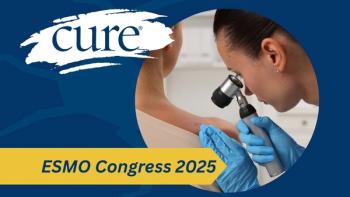
FDA Warns Against Surgery That Can Spread Uterine Cancer
Key Takeaways
- LPM is linked to higher uterine cancer recurrence and worse outcomes than manual or no morcellation.
- FDA review shows increased risk of metastases and reduced survival with LPM.
Women with presumed uterine growths known as fibroids who underwent laparoscopic power morcellation (LPM) have higher rates of uterine cancer recurrence and worse outcomes compared to those who got manual or no morcellation, according to a recent release published by the Food and Drug Administration.
Women with presumed uterine growths known as fibroids who underwent laparoscopic power morcellation (LPM) have higher rates of uterine cancer recurrence and worse outcomes compared to those who got manual or no morcellation, according to a recent release published by the Food and Drug Administration.
According to the FDA’s review, which involved more than 20 articles published between 2014 and 2016, about 1 in 225 to 1 in 580 women who underwent hysterectomy or myomectomy for a potential benign uterine fibroid may have occult (hidden) uterine sarcomas. The FDA also estimates the rate of occult leiomyosarcoma, a particularly aggressive type of sarcoma, to be approximately 1 in 495 to 1 in 1100.
Women undergoing LPM — a minimally invasive method of surgery – may be at a higher risk for metastases, or poorer disease-free survival and shorter overall survival, the FDA found. This is because the presumed fibroids might harbor cancer cells that would could spread during the procedure.
“We recognize that some health organizations have reported a lower estimate of risk and that some groups continue to request that we scale back our recommendations. However, after looking at all the relevant data, we believe our estimates remain accurate, and our recommendation against the use of this device to remove fibroids in the vast majority of women is appropriate and critical to better protecting these women. We are committed to continuing to review new relevant data to assure patient safety,” said Jeff Shuren, M.D., director of the FDA’s Center for Devices and Radiological Health in a release.
The FDA report noted that in the general population the incidence of random uterine sarcoma was 0.277 percent. In those receiving LPM, the rate was 0.328 percent. The same was seen for leiomyosarcoma, which is found in one to five out of every 1,000 uterine fibroids. The standard rate is 0.134 percent and in those receiving LPM it was 0.175 percent. For women over the age of 60, the rates of occult sarcoma were 2 percent to 3 percent following LPM.
At five years, none of the patients in the LPM group remained disease-free. In the non-morcellation group, 58.9 percent of patients remained disease-free at 5 years. For overall survival, 19.5 percent of those in the LPM group were alive at five years compared with 53.4 percent of those in the non-morcellation cohort. The median relapse-free survival was 66 months with morcellation and 90 months without the procedure.
Concerns for this method of treatment were initially raised in 2014, when the FDA published a general warning. Since then, LPM use has been decreasing. The FDA’s Center for Devices and Radiological Health (CDRH) most recent assessment confirms that the potential danger of LPM.
"Since the FDA first issued warnings about the risk of spreading unsuspected uterine cancer from the use of laparoscopic power morcellators, we have continued to review new research to ensure our recommendations reflect the most current scientific evidence. Our latest analysis found a similar incidence of these hidden cancers to our estimate three years ago,” Shuren said.





